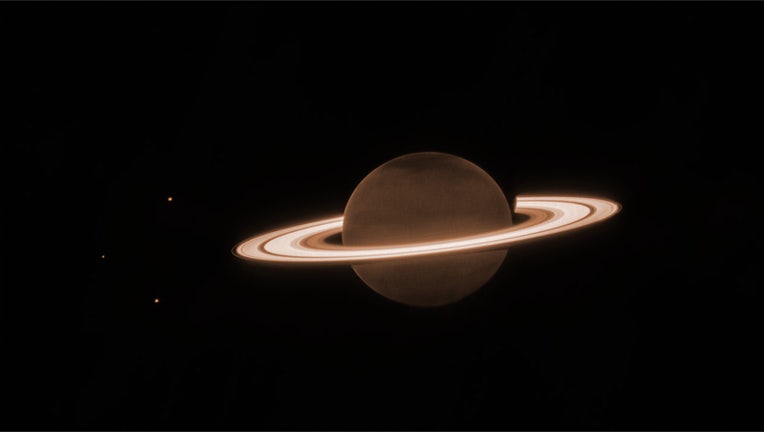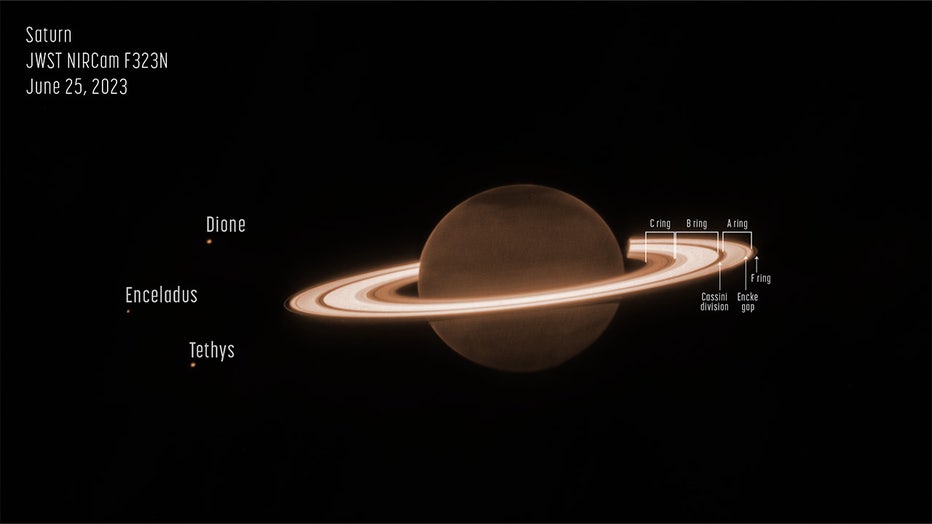Saturn’s rings glow in new image captured by James Webb telescope

Image of Saturn and some of its moons, captured by the James Webb Space Telescope’s NIRCam instrument on June 25, 2023. In this monochrome image, NIRCam filter F323N (3.23 microns) was color mapped with an orange hue. (NASA, ESA, CSA, STScI, M. Tiscareno (SETI Institute), M. Hedman (University of Idaho), M. El Moutamid (Cornell University), M. Showalter (SETI Institute), L. Fletcher (University of Leicester), H. Hammel (AURA); image processing by J. DePasquale (STScI))
Already considered a cosmic beauty, Saturn looked particularly stunning after the James Webb Space Telescope captured an infrared image of the planet and its glowing rings.
The planet itself appeared darker in infrared due to the methane gas in the atmosphere which absorbs almost all sunlight, but Saturn’s rings, which are made up of billions of small chunks of ice and rock coated in dust, appeared to shine brightly against the vastness of space.
Saturn’s ring system extends up to 175,000 miles from the planet and has a vertical height of about 30 feet in the main rings.
The rings are named alphabetically from A to G with A, B, and C dubbed as the "main" rings.

Labeled image of Saturn and some of its moons, captured by the James Webb Space Telescope’s NIRCam instrument on June 25, 2023. In this monochrome image, NIRCam filter F323N (3.23 microns) was color mapped with an orange hue. (NASA, ESA, CSA, STScI, M. Tiscareno (SETI Institute), M. Hedman (University of Idaho), M. El Moutamid (Cornell University), M. Showalter (SETI Institute), L. Fletcher (University of Leicester), H. Hammel (AURA); image processing by J. DePasquale (STScI))
The image was taken on June 25 as part of the Webb Guaranteed Time Observation program 1247, according to NASA.
"The program included several very deep exposures of Saturn, which were designed to test the telescope’s capacity to detect faint moons around the planet and its bright rings. Any newly discovered moons could help scientists put together a more complete picture of the current system of Saturn, as well as its past," NASA said in a blogpost.
Additionally, three of Saturn’s moons – Dione, Enceladus, and Tethys – are seen as small glowing dots on the left side of the image.
Saturn has a total of 83 moons, 63 of which have been confirmed and named.
This story was reported from Los Angeles.

